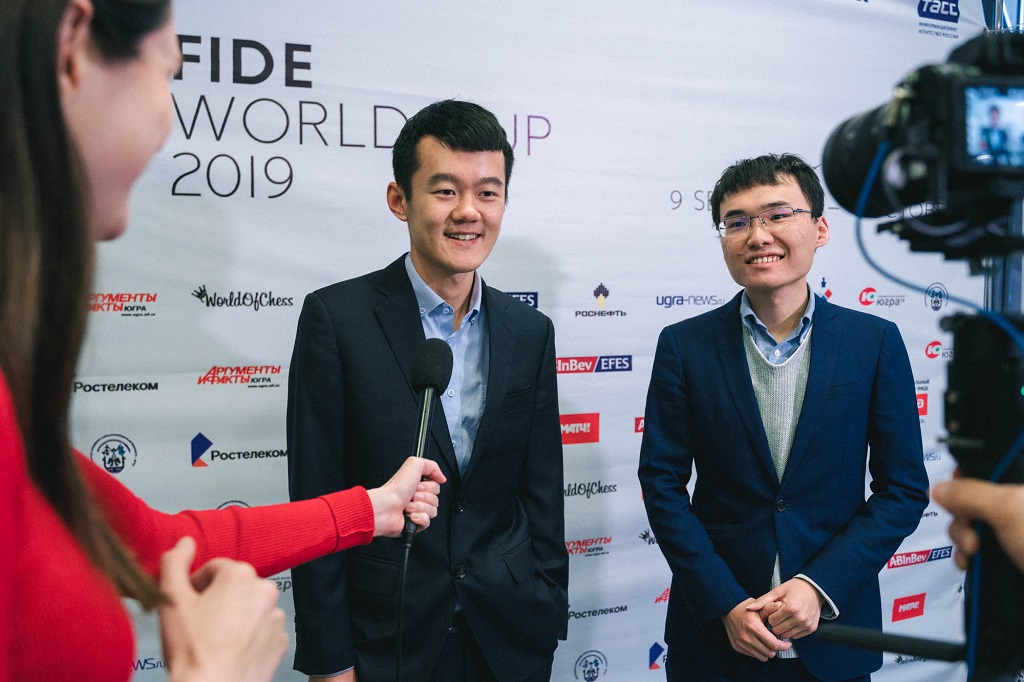


 The FIDE World Cup is taking place in Khanty-Mansiysk. It is a seven-round knock-out event for 128 players, with a total prize fund of US$ 1.6 million and a first prize of US$ 110,000. The matches consist of two classical games with a time control of 90 minutes for 40 moves plus 30 minutes for the rest of the game, with an increment of 30 seconds per move. The finals consist of four classical games. Full schedule.
The FIDE World Cup is taking place in Khanty-Mansiysk. It is a seven-round knock-out event for 128 players, with a total prize fund of US$ 1.6 million and a first prize of US$ 110,000. The matches consist of two classical games with a time control of 90 minutes for 40 moves plus 30 minutes for the rest of the game, with an increment of 30 seconds per move. The finals consist of four classical games. Full schedule.
It's been over two weeks since the start of the World Cup and the biennial event has provided the spectators its usual fair share of drama. Now that the dust has settled, four of the top twelve rating favourites are fighting to reach the final. One semi-final sees the strongest Chinese players in the world fighting each other, while the other sees Maxime Vachier-Lagrave looking to get his first chance to participate in a Candidates Tournament; his rival is Teimour Radjabov, who all but stopped competing in elite events after a bad showing at the second to last stage of the 2013 World Championship cycle.

Teimour Radjabov achieved his peak rating of 2793 in 2012 | Photo: FIDE
Ding Liren arrived in Khanty-Mansiysk as the top seed and is the one player participating without the pressure of needing to reach the final, as he will most likely get a spot in the Candidates in virtue of his rating. The mild-mannered 26-year-old declared after his draw against Yu Yangyi that it is "strange" to face his compatriot and teammate — which does not come as a surprise, given how Chinese players tend to help each other even during individual events.
Ding was the first one spending large chunks of time in Thursday's game, despite having followed a variation that Yu Yangyi himself had explored from the white side in the past. Yu had the upper hand, mainly thanks to his strong e3-knight:
In the commentary booth, Anna Rudolf and Evgeniy Miroshnichenko could not agree on how to depict the strong black knight — they considered calling it either an octopus knight or, strangely, a lobster knight. Notwithstanding, Ding knew he needed to get rid of the dangerous piece and played 25.♘c2 here. After 25...♞f5, the players repeated the position with 26.♘a3 ♞e3 and went on to sign the draw. Yu Yangyi will have the white pieces in game two.

Will we see Yu Yangyi in the 2020 Candidates Tournament? | Photo: FIDE
Maxime Vachier-Lagrave deviated from theory as early as move 7 in his first semi-final encounter against Teimour Radjabov. A strategic struggle ensued, with both players keeping healthy pawn structures and their kings far away from danger in the queenless middlegame. When 'MVL' offered to trade the last pair of rooks, there was little doubt that the game would end up peacefully:
The game continued 23.♖a8 ♜xa8 24.♘xa8 ♝f8, and the players agreed to a draw seven moves later — draw agreements are only permitted after move 30.
In the post-game interview, Vachier-Lagrave was asked about his games with Black in the competition. The French grandmaster cracked a smile and said: "There have been some awkward moments, but in general it hasn't gone badly". In fact, he scored two wins and drew three times in his classical games with Black, getting perhaps the most uncomfortable position out of the opening in his round four match-up against Peter Svidler.

France's number one Maxime Vachier Lagrave | Photo: FIDE
The organizers have been asking general questions to chess players and putting together short videos with the responses. If you have ever wondered who are Levon Aronian's favourite authors or which grandmaster is also studying Physics, these clips will surely satisfy your curiosity.
GM Daniel King recapped the action of the day
Commentary by IM Anna Rudolf and GM Evgeny Miroshnichenko